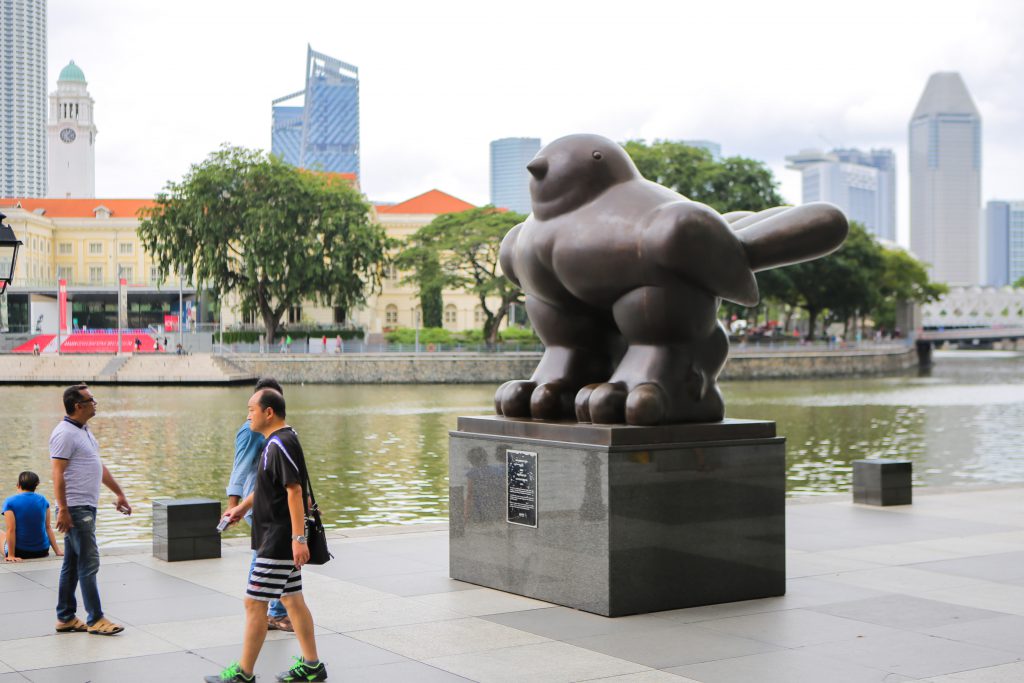Art and Soul: Powerful and Powerless Art in Singapore
August 22, 2017

Are public sculptures more than meets the eye?
The Renaissance City Report was a plan unveiled on 9 March 2000 by the then-Ministry of Information and the Arts, under which the National Arts Council (NAC) was established in August 1991. The report aimed to promote the arts and culture scene in Singapore by envisioning it to be a global arts city that could nurture creative talents and cultivate an appreciation of shared heritage among Singaporeans.
Arising from this report is the Public Sculptures Masterplan implemented by the Urban Redevelopment Authority in 2002. In a 2008 paper, Art and Soul: Powerful and Powerless Art in Singapore, A/P T. C. Chang (Department of Geography) investigates how public art such as sculptures can be used to enhance place identity and foster a sense of belonging. He explains how public art creates a special kind of spatiality through the interactions between the social (i.e. the art, artists and audience) and the spatial (i.e. the site and environment) realms. In so doing he brings to light the politics behind the seemingly innocuous image of public art.
Fernando Botero’s Bird sculpture along the Singapore River exemplifies the hidden dimensions of public art. Chang questions the publicness of this foreign artwork due to its lack of relatability and engagement with the locals and the physical environment. Despite being a ‘public’ artwork, the public was not consulted as it was privately purchased by the United Overseas Bank (UOB) for its symbolism of prosperity. While this raises questions as to whether only local art should be considered public, local sculptures installed in Singapore’s tourist spots have also faced similar political struggles between local artists and the state. Ultimately, Chang asserts that more cities today are using art as a utilitarian tool to ‘soft brand’ themselves or to strengthen nationalistic sentiments, or as a commodity for the tourism industry.
Click here to learn more.
